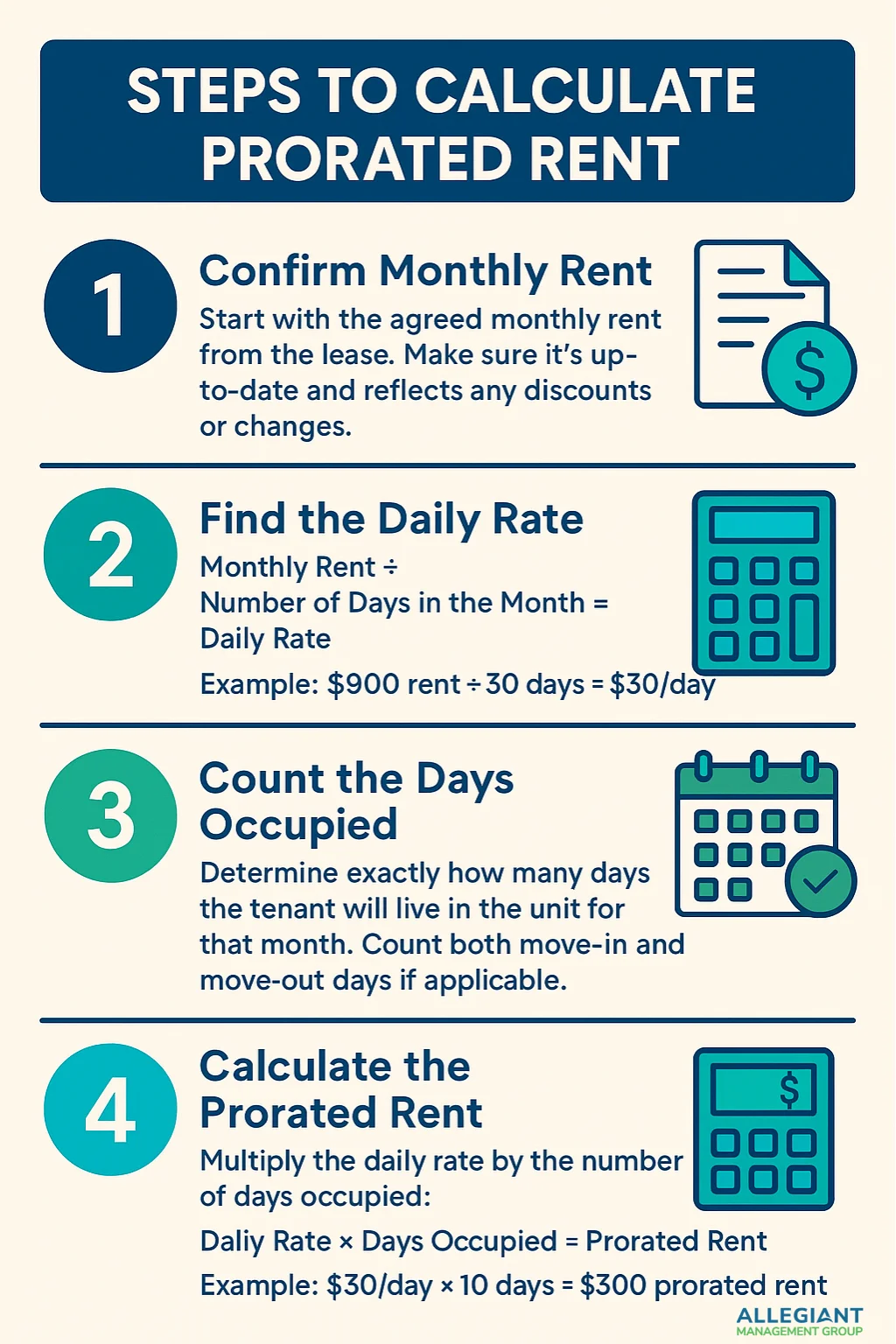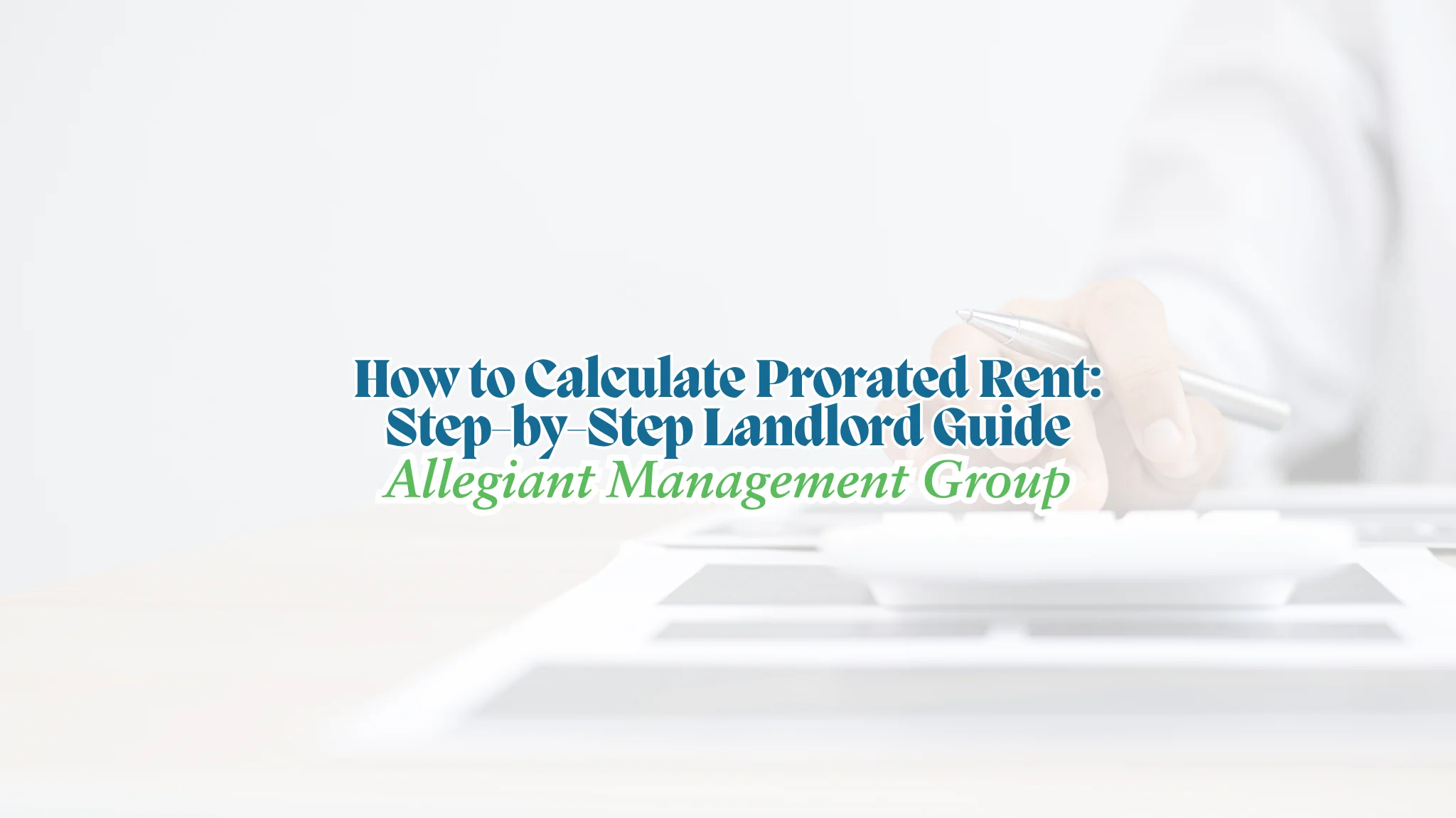Understanding Prorated Rent
When tenants move in or out mid-month, prorating rent ensures they pay only for the days they occupy the property. For landlords, it’s a simple but important process that keeps billing fair, avoids disputes, and aligns rental income with actual occupancy.
In this guide, you’ll learn what prorated rent is, why it matters, and how to calculate it using both manual methods and online tools. We’ll also cover common mistakes to avoid and special cases you might encounter.

What Is Prorated Rent?
Prorated rent is the amount charged when a tenant rents for part of a month instead of the full month. The calculation is based on the daily rental rate multiplied by the number of days the tenant will live in the property.
It’s commonly used when:
- A tenant moves in after the first of the month
- A tenant moves out before the month ends
- Short-term or flexible lease arrangements apply
Prorating keeps payments fair and transparent—tenants pay for the time they’re there, and landlords don’t lose income for vacant days.

Why Landlords Should Prorate Rent
Prorating rent benefits both sides:
- Fairness: Tenants pay only for the days they occupy the unit
- Flexibility: Works for irregular lease start and end dates.
- Trust-building: Prevents overcharging and keeps tenant relationships positive.
Steps to Calculate Prorated Rent
Calculating prorated rent comes down to four key steps:
1. Confirm Monthly Rent
Start with the agreed monthly rent from the lease. Make sure it’s up-to-date and reflects any discounts or changes.
2. Find the Daily Rate
Use the formula:
Monthly Rent ÷ Number of Days in the Month = Daily Rate
Example: $900 rent ÷ 30 days = $30/day
3. Count the Days Occupied
Determine exactly how many days the tenant will live in the unit for that month. Count both move-in and move-out days if applicable.
4. Calculate the Prorated Rent
Multiply the daily rate by the number of days occupied:
Daily Rate × Days Occupied = Prorated Rent
Example: $30/day × 10 days = $300 prorated rent

Example: Manual Prorated Rent Calculation
Scenario: Tenant moves in March 10. Rent is $1,200/month.
1. Days in March: 31
2. Daily rate: $1,200 ÷ 31 = $38.71/day
3. Days occupied: March 10–31 = 22 days
4. Prorated rent: $38.71 × 22 = $851.62
Tools That Can Help
While the math is simple, using a prorated rent calculator or a spreadsheet can save time and reduce errors. Many landlord software platforms include prorating features—just enter the rent amount and dates, and the system does the rest.
Special Cases to Watch For:
- Leap years: February may have 29 days.
- Short-term rentals: Adjust for seasonal or weekend rates.
- Extra charges: Utilities, parking, or maintenance may need prorating too.

Prorated Rent Calculator
Accurate, transparent calculations for move‑ins, move‑outs, or any custom partial month.
Calculator Inputs
Enter details and click Calculate to see the formula breakdown here.
Tip: Save a record by copying the breakdown into your notes or lease addendum.
Common Mistakes to Avoid
- Miscounting move-in/move-out days
- Ignoring additional prorated costs (utilities, parking)
- Rounding too early in the calculation
Double-check your math and lease dates to keep billing accurate and professional.
Final Takeaway
Prorating rent is one of the simplest ways landlords can maintain fairness and professionalism. Whether you do it by hand or with a calculator, knowing how to apply the formula correctly prevents disputes and keeps tenants happy.
Need help managing leases and rent calculations?
At Allegiant Management Group, we handle every detail—from prorated rent and tenant move-ins to full-service property management. Our team helps you keep billing accurate, relationships positive, and properties profitable.
Contact Allegiant Management Group today to make rental management easier.
Frequently Asked Questions
Do landlords have to prorate rent?
In most places, landlords are not legally required to prorate rent unless it’s stated in the lease. However, many choose to do so to keep billing fair and avoid tenant disputes. Some states or local laws may require prorating in specific situations, so it’s best to check local regulations.
How do you calculate prorated rent for tenants?
To calculate prorated rent:
1.Find the daily rate by dividing the monthly rent by the number of days in the month.
2.Multiply the daily rate by the number of days the tenant will occupy the unit.
Example: $1,200 rent ÷ 30 days = $40/day. If the tenant stays 15 days, prorated rent = $40 × 15 = $600.
What formula is used for prorated rent?
The standard formula is: (Monthly Rent ÷ Days in Month) × Days Occupied = Prorated Rent
Some landlords instead use an annual rent calculation divided by 365 days for daily rate, which can give slightly different results.
Should prorated rent include utilities?
If utilities are part of the lease or billed as part of rent, they should also be prorated. If utilities are billed separately and based on usage, they are typically calculated independently.
How do you prorate rent for a move-out?
The process is the same as move-in calculations—count the number of days the tenant stays in the final month, multiply by the daily rate, and bill only for that amount.
What happens if rent is not prorated?
If rent isn’t prorated, tenants may be overcharged for days they don’t live in the property. This can lead to disputes and damage landlord-tenant relationships.



